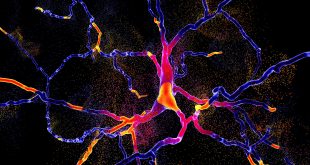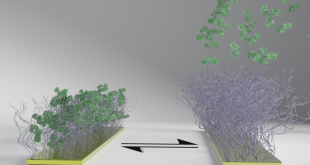By Jana Manolakos
Somewhere along Canada’s vast stretch of stark Arctic coastline, you’ll find the tiny figure of biologist Emily Choy, scaling rocky ocean cliffs as she pursues the impacts of climate change on Arctic marine predators. From belugas to murres and kittiwakes, her work has taken her to remote locations across the Canadian Arctic – from the Devon Island, Nunavut, to Kendall Island in the Northwest Territories, and Coats Island in northern Hudson Bay. Fueled by curiosity and dedicated to the well-being of northern communities, she has been collaborating with local Inuit and Indigenous peoples to further her work on how climate change affects the Arctic ecosystem, specifically seabirds.
Choy was named an Explorer-in-Residence by The Royal Canadian Geographical Society this summer, becoming the first female scientist to earn the title since the society’s founding in 1929. Her association with the society dates back to 2014, when she became involved in the Victoria Strait Expedition, which searched for the lost ships of the Franklin voyage. The trailblazing explorer is an NSERC and L’Oreal-UNESCO For Women in Science Research Excellence Postdoctoral Fellow at McGill University in Montreal.
What’s the significance of becoming an explorer-in-residence?
It is a tremendous honour and as the first female scientist, I hope to inspire youth from diverse backgrounds to develop an interest in wildlife issues in the North. I also hope the support I receive will help to expand my partnerships with northern communities with whom I’ve been very honoured to work.
What triggered your pursuit of science?
I’ve wanted to be a zoologist for as long as I can remember. I’m from Markham, Ontario, but grew up at my grandparents’ cottage on Canal Lake in Bolsover, near Lake Simcoe. As a child, I’d spend hours catching frogs and snakes, fishing, and feeding chipmunks and chickadees at my grandparents’ cottage. I developed a love for nature and the environment at a young age, which inspired me to pursue a life of science.
I never dreamed I’d work in the Arctic. I had the opportunity to work there during my Master’s degree at the University of Ottawa under the supervision of Dr. Jules Blais, where I studied the ability of a large seabird colony to transport nutrients and contaminants to neighbouring ecosystems through their guano. During my field work on Devon Island in Nunavut, I saw Arctic foxes, snow buntings, and polar bears, and was just captivated by the landscape and wildlife.
Afterwards, I did a PhD on beluga whales as sentinels of environmental change in the Beaufort Sea ecosystem, as part of a community-based monitoring program in partnership with Indigenous communities in the Inuvialuit Settlement Region of the Northwest Territories. I conducted most of my work at Inuvialuit hunting camps on Kendall Island in the Mackenzie Delta Beaufort Sea region, and studied the prey, body condition and diving physiology of beluga whales.
What barriers must still be overcome?
There are still many unknowns on the impacts of climate change to Arctic ecosystems, especially in regards to understanding the effects of multiple stressors on wildlife. For example, Arctic warming may not only result in increases in heat stress to seabirds such as thick-billed murres, but also increases in human activity such as ship traffic, which may overlap with their foraging areas.
What role did you play in the expedition?
I was a Weston scientist on the Victoria Strait Expedition. As part of my role, I presented my PhD research on beluga whales and partnerships with communities in the Inuvialuit Settlement Region for the expedition team, participated in scientific discussions, and conducted some marine mammal/seabird surveys. I was on the One Ocean Expeditions ship for approximately two weeks, and it was quite exciting to be a part of an expedition team with leaders and scientists from the Royal Canadian Geographical Society, The W. Garfield Weston Foundation, Parks Canada, The Arctic Research Foundation and other organizations.
A highlight during the expedition was seeing a mother polar bear with triplets – a possible sign that the polar bear population was doing well and healthy that year. Even though I didn’t see any whales, I was happy to see many polar bears on the sea ice throughout the expedition.
What are your current projects?
My research is on the effects of climate change on Arctic seabirds, primarily thick-billed murres. Most of my work is conducted at Coats Island in northern Hudson Bay, Nunavut.
What equipment do you use for field work?
I am currently using biologgers, such as GPS accelerometers and heart rate loggers, to track the effects of climate-induced prey changes on the birds’ energetics. I am also studying the direct effects of heat stress via Arctic warming on the birds using flow-through respirometry and a field metabolic system.
Who are your collaborators?
My research has many collaborators, including scientists from Environment and Climate Change Canada, the University of Quebec at Rimouski, the University of Windsor, and the University of Liverpool.
I am currently in the lab of Dr. Kyle Elliott at McGill University and am co-supervised by Dr. Grant Gilchrist from the National Wildlife Research Institute at Environment and Climate Change Canada. I work on a large team of highly qualified and passionate scientists that study seabirds in the Canadian North.
What can we learn from the Arctic?
The Arctic is undergoing rapid change, and is warming at twice the global rate. The Arctic is known as an early warning system for the potential effects of climate change to southern regions, and many species which are extremely well adapted for living in cold harsh Arctic climates are sensitive to rapid environmental change. As a result, we are seeing the impacts of climate change in the Arctic occur faster than the rest of the world.
 BioLab Business Magazine Together, we reach farther into the Canadian Science community
BioLab Business Magazine Together, we reach farther into the Canadian Science community





